
The American Legation in Tangier
America's Earliest Diplomacy
Tangier became Morocco's diplomatic headquarters
in the 18th century.
Tangier was one of the first nations to recognize
the United States of America as a sovereign nation, in 1777,
and the U.S. dedicated its first consulate in Tangier
while George Washington was the first U.S. President,
in 1789–1797.
Tangier's position at the Atlantic Ocean end of the
Strait of Gibraltar made it a natural location
for early encounters, relations, and intrigues.
The Tangier International Zone, described on the
previous page,
ceased to exist in 1960, but enclaves persist today in the area.
The U.K. still holds Gibraltar on a small peninsula of Spain,
and Spain still holds the cities of Ceuta and Melilla,
the second further east and not pictured here.
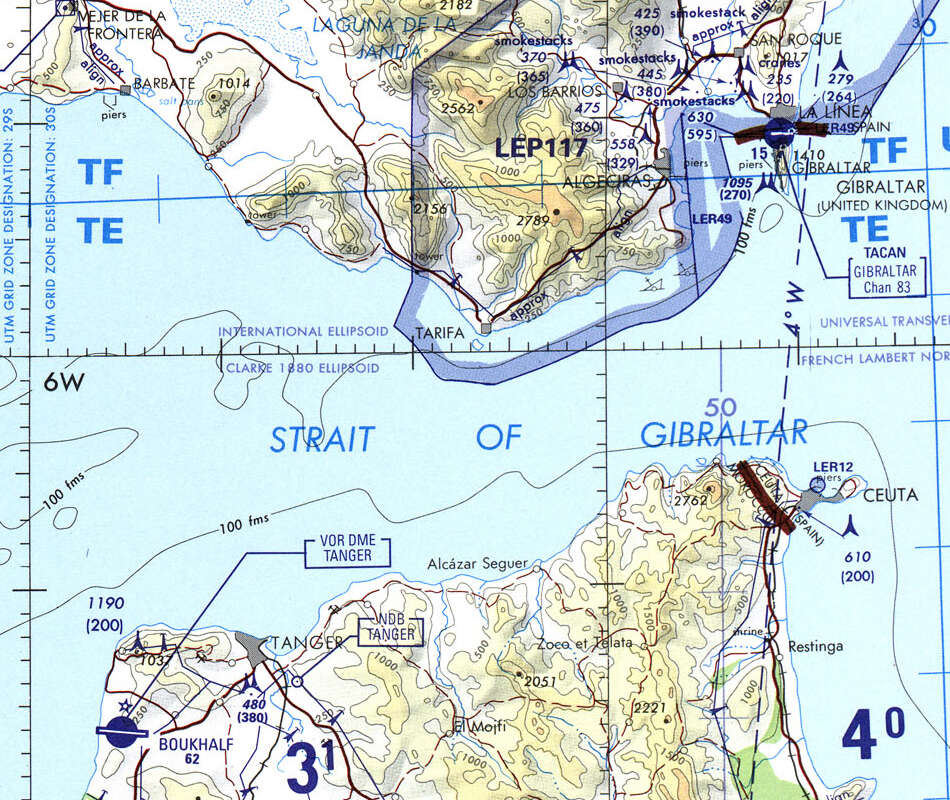
Portion of Tactical Pilotage Chart G-1D from the Perry-Castañeda Library Map Collection at the University of Texas at Austin.
America — The Early Years
Mohammed ben Abdallah, born in 1710 in Fes, ruled as Moroccan Sultan Mohammed III from 1757 to 1790. On 20 December 1777 he gave orders in which Morocco became the first nation to recognize the United States as an independent nation.
The Moroccan-American Treaty of Friendship, also called the Treaty of Marrakech, was signed in 1786. It was the first treaty signed between the U.S. and any Arab, African, or Muslim country, and it remains the longest unbroken treaty relationship in the history of the U.S.
The Legation
Rabat was Morocco's governmental capital, as it remains today. But in the 19th century and over halfway through the 20th, Tangier was Morocco's diplomatic capital. This made perfect sense given Tangier's history and location.
In 1821 Sultan Moulay Suliman gave the U.S. a two-story building in the southern part of the Tangier medina, to be used as a diplomatic mission. Here is a view from the passageway past the legation, the building's entrance is on the right.
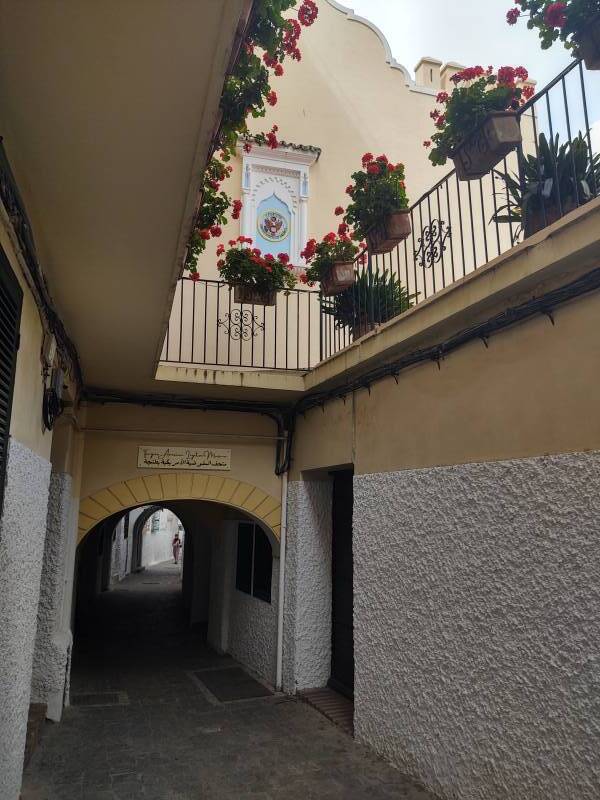
This was the first piece of property acquired abroad by the U.S. government, and it became the American Legation.
Through the 19th century and into the 20th century, most diplomatic missions were legations. An embassy was headed by an ambassador, the personal representative of a monarch. So, the only embassies were those that major powers that were monarchies sent to other major powers that were monarchies. And, "monarchy" was usually limited to the inter-related royal families of Europe. That's actually one big family with lots of inbreeding over the centuries. They're handy examples in biology classes when introducting genetics and recessive traits such as color-blindness and hemophilia.
This 1901 map shows several of the legations in Tangier's medina.
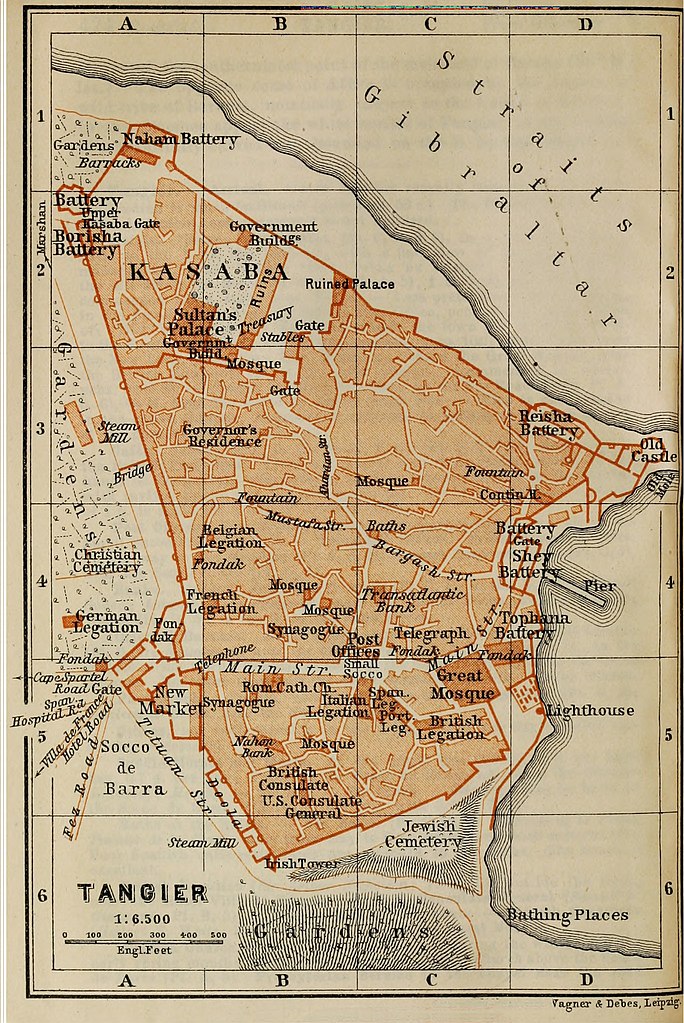
1901 map from Baedeker's "Spain and Portugal – Tangier".
During World War II, while the Tangier International Zone was in effect under Spanish control, the legation was a headquarters for U.S. intelligence officers.
After World War II, embassies became the international standard for diplomacy. The American Legation complex continued to be extended, still containing the original two-story structure from 1821.
Now an embassy, Tangier was the first U.S. diplomatic mission to receive Marine Security Guards when that program began in 1949.
The first picture below shows the entry courtyard. The visitor is directed up the short staircase under the archway straight ahead. The second picture is your view as you go up that short staircase, through the formal interior entrance, and into the legation buildings.
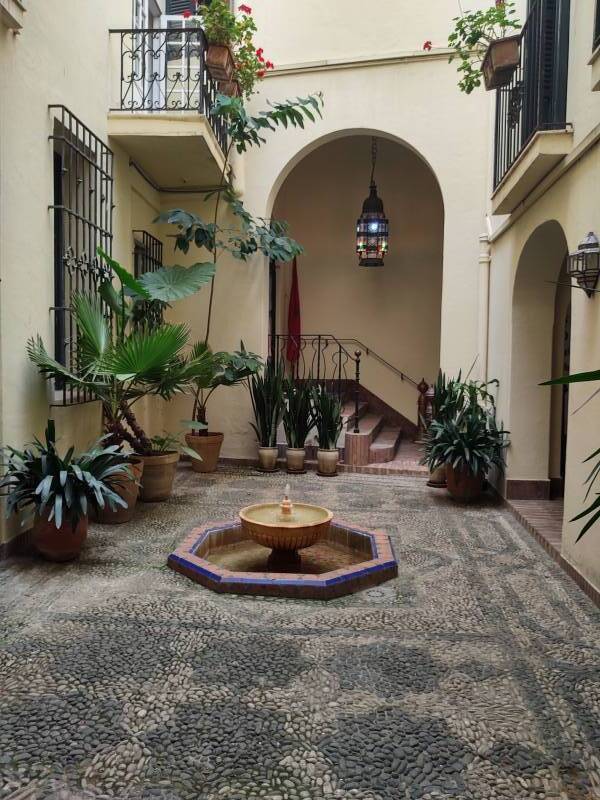
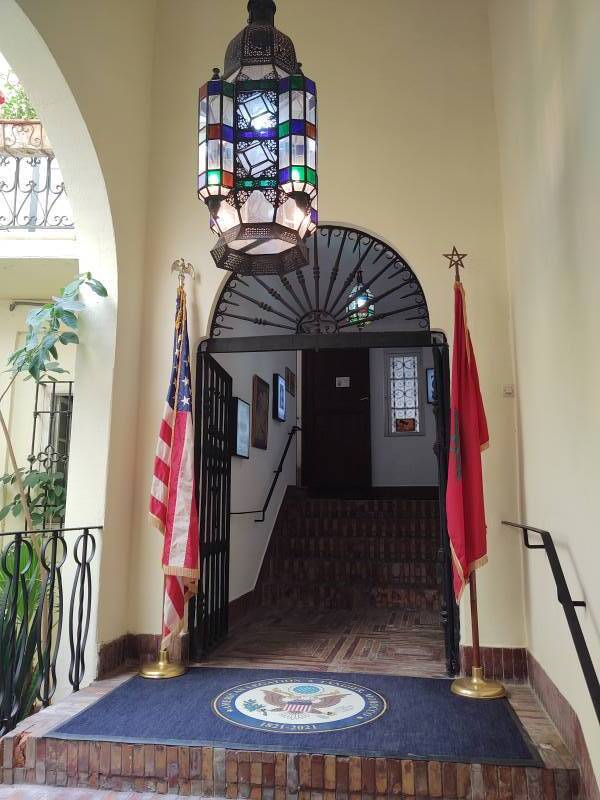
Morocco's diplomatic capital moved to Rabat in 1956 when the French Protectorate ended. The American Legation in Tangier became a consulate and served other diplomatic and governmental functions. For example, Arabic language training for U.S. State Department staff and Peace Corps personnel.
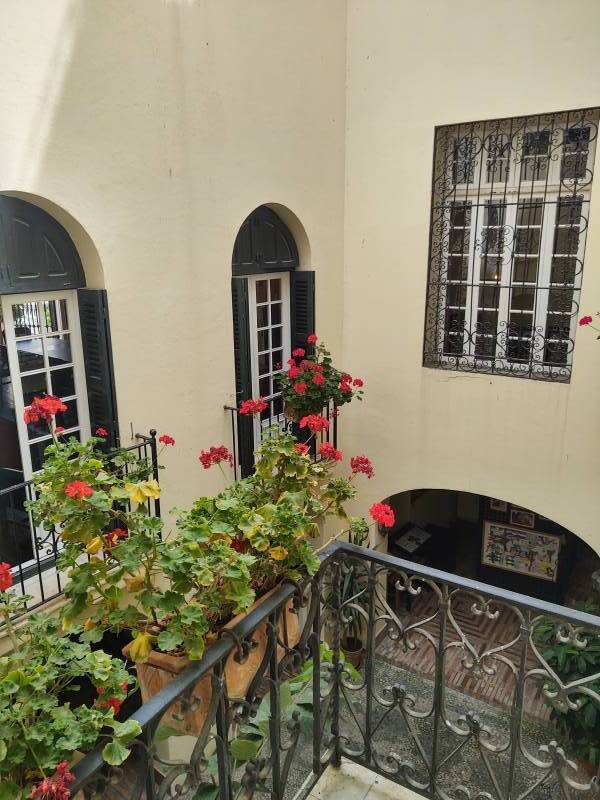
By 1976 the legation was neglected and descending into increasing disrepair. A group of former U.S. diplomats started the Tangier American Legation Museum Society to repair and maintain the facility.
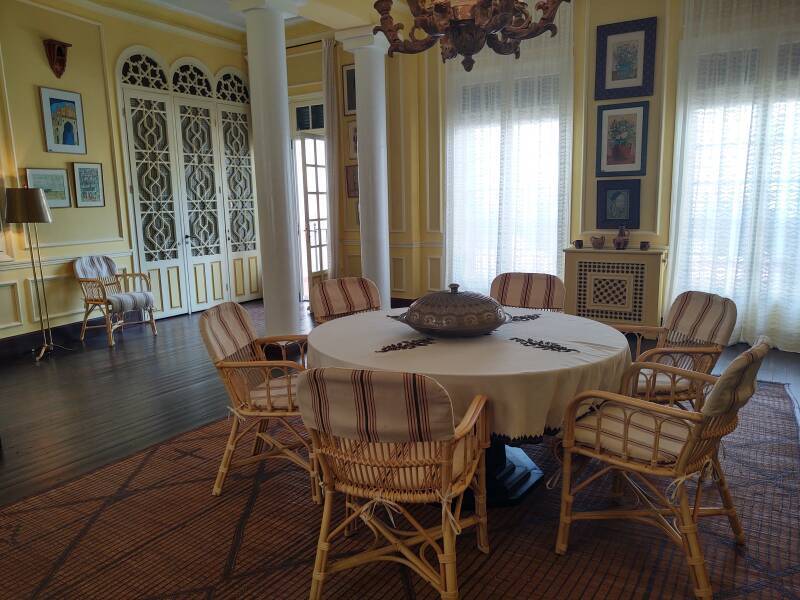
Since then it has been a cultural center, research library specializing in Arabic language studies, and a museum.
The two rows of red flowers line the railings above the passageway through the medina.
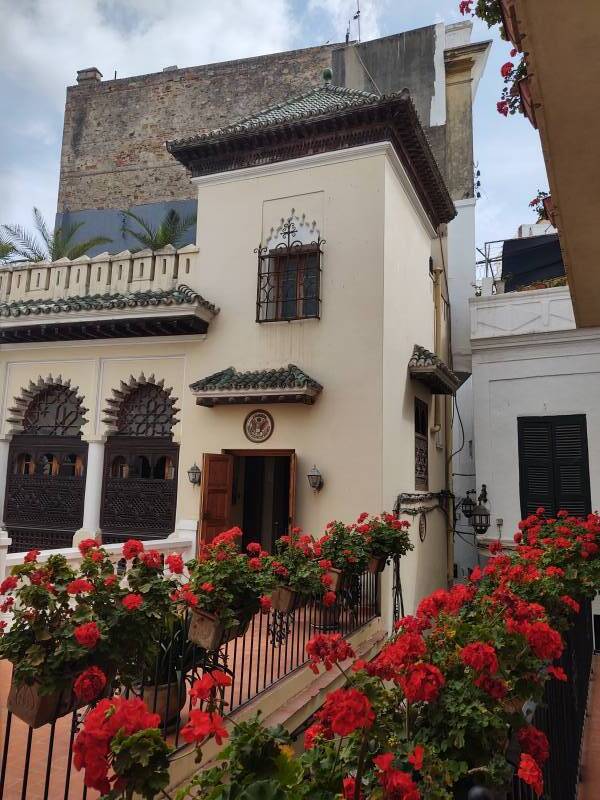

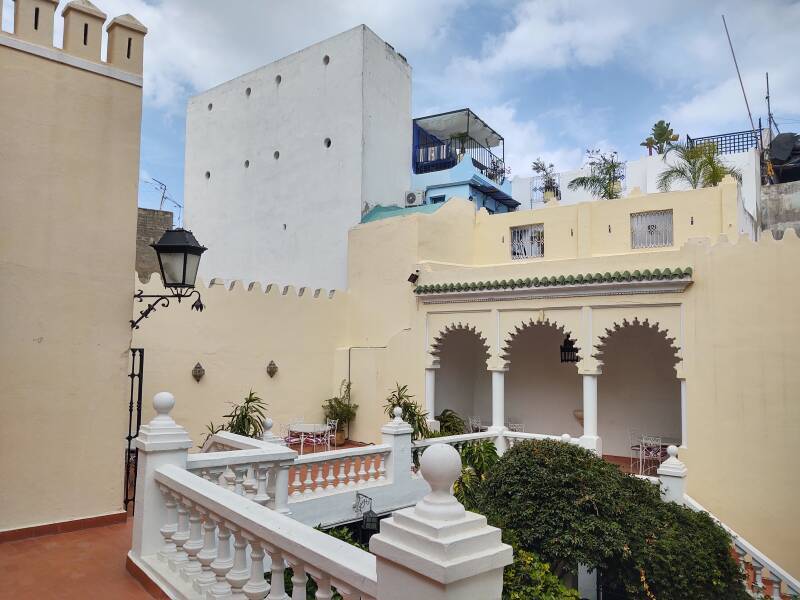
Raisuni, Perdicaris, and Gunboat Diplomacy
Mulai Ahmed er Raisuni, known simply as Raisuni to most English speakers, was a tribal leader and bandit at the turn of the 20th century. He specialized in extortion schemes and in kidnapping officials and holding them for ransom. In 1904 l'affaire Perdicaris made him internationally famous.
Raisuni kidnapped the Greek-American Ion Hanford Perdicaris (author, professor, lawyer, playwright, etc) and his stepson Cromwell Varley, demanding a ransom of US$ 70,000, worth over 2.1 million dollars today, plus control of several districts of Morocco. The kidnapping occurred on 18 May 1904.
Theodore Roosevelt, always looking for a reason for a threat of force, and running for re-election as U.S. President, issued his own demand of "Perdicaris alive or Raisuni dead!" and dispatched seven warships and several companies of U.S. Marines. Under a mix of U.S. pressure and a fear of unrest, Spanish, Italian, and British warships also steamed to Tangier.
The Sultan, under pressure from the U.S., agreed to Raisuni's demands. The hostages were scheduled to be released on 21 July. Meanwhile, Roosevelt's threat was read out at the Republican National Convention, thoroughly exciting the crowd who were about to nominate him for re-election anyway.
By 24 June, Perdicaris was free and on his way to the U.S.
Roosevelt was re-elected in November 1904.
Then... the details of the Perdicaris affair were covered up for the next thirty years. It seems that Perdicaris had been living in South Carolina when the U.S. Civil War began. Wanting to avoid being conscripted into the Confederate Army, he traveled to Athens and, in his vague description, "registered" as a Greek citizen. After all the blustering and naval deployments to rescue an American citizen, there remained questions as to whether he really was one.
In 1975, John Milius directed the film The Wind and the Lion dramatizing the Perdicaris kidnapping. Liberties were taken. It starred Sean Connery as Raisuni and the 29-year-old Candice Bergen as the bearded 64-year-old hostage.
Perdicaris had been serving in the late 1800s as president of the Hygienic Commission in Tangier, organizing the construction of a modern sanitation system. The Commission became more and more powerful, described as "a government within a government", and led directly to the establishment of the Tangier International Zone.
The glass-topped table in the far corner of this room has some original documents from the Perdicaris case.
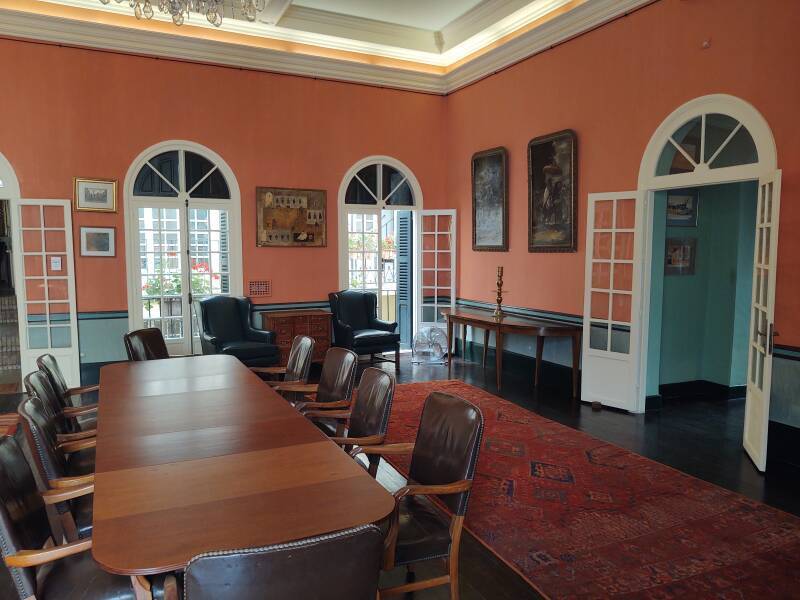
TALIM and the Paul Bowles Wing
Now TALIM or the Tangier American Legation Institute for Moroccan Studies operates here. Its programs include Arabic literacy courses for women who lived in the medina.
Paul Bowles was an American composer, author, and ethnomusicologist. He settled in Tangier in 1947 and lived there until his death in 1999.
The Legation already had a Paul Bowles Room. In 1999, when Bowles died, a friend of his donated furniture, photographs, and documents for the original Paul Bowles Room. What has now been expanded into the Paul Bowles Wing is through the open door on the opposite side of the courtyard in the below picture
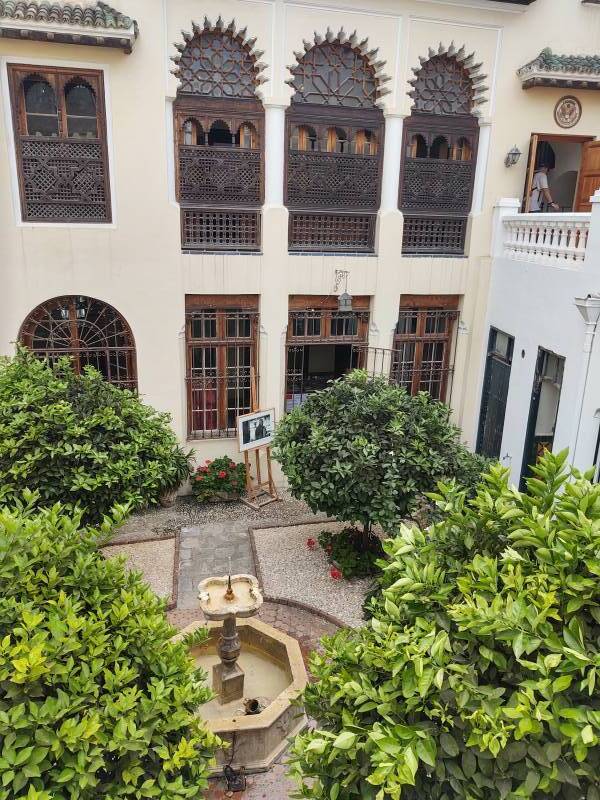
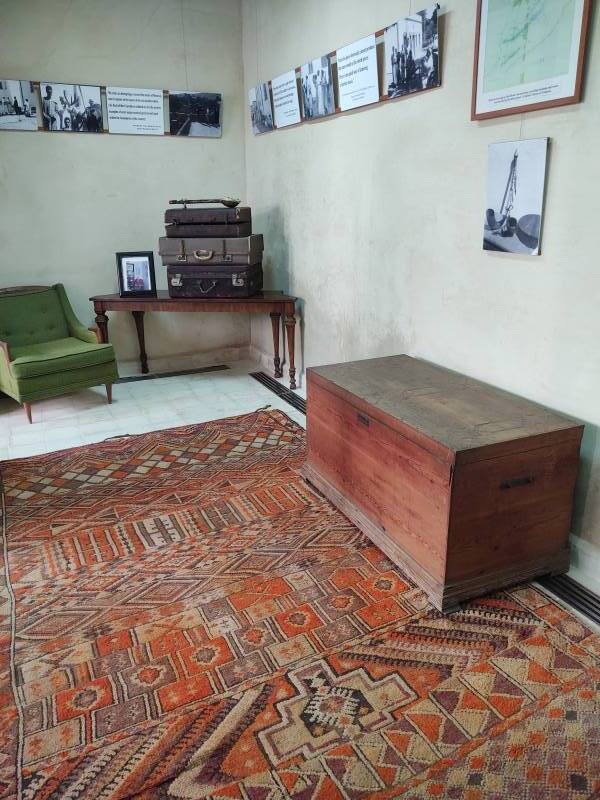

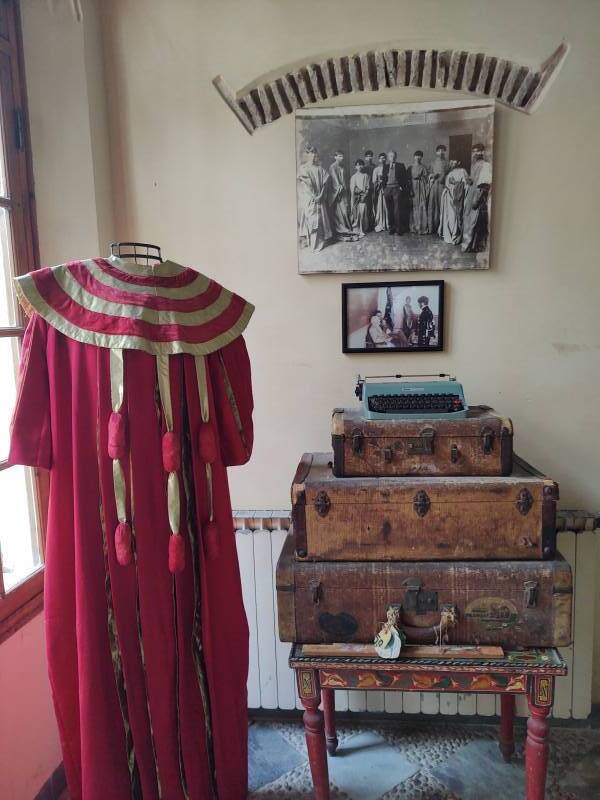
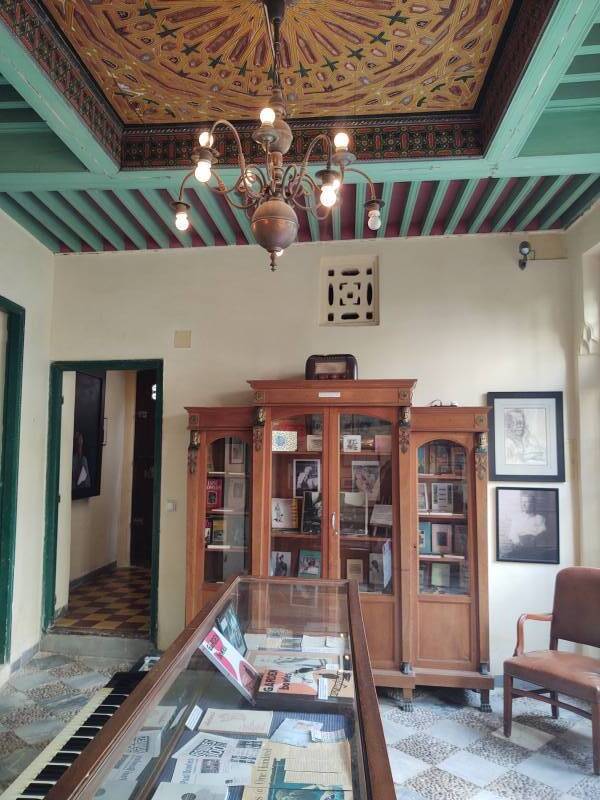
Music was playing in this room. Bowles undertook a multi-year project to record the wide range of Moroccan music on behalf of the U.S. Library of Congress.
The LOC holds the original recordings, but doesn't seem to have them available for listening over the Internet.
Dust to Digital has curated those recordings into higher quality versions and released it as a 4 CD set.
And, there are some videos and playlists on YouTube.
U.S. Library of Congress
Paul Bowles Moroccan Music Collection
Dust to Digital
Music of Morocco: Recorded by Paul Bowles, 1959
YouTube
Videos and Playlists
Next, I wandered through the medina and up to the kasbah.